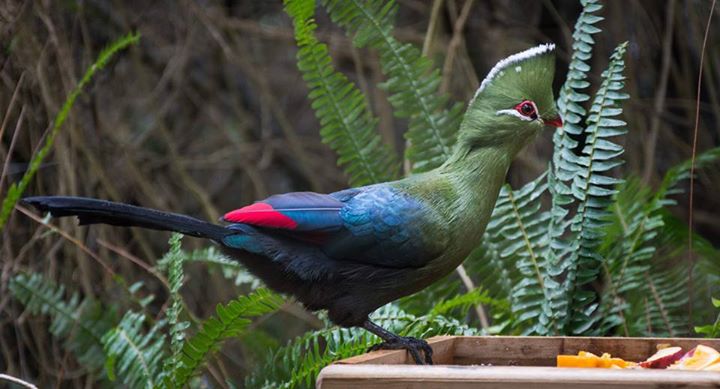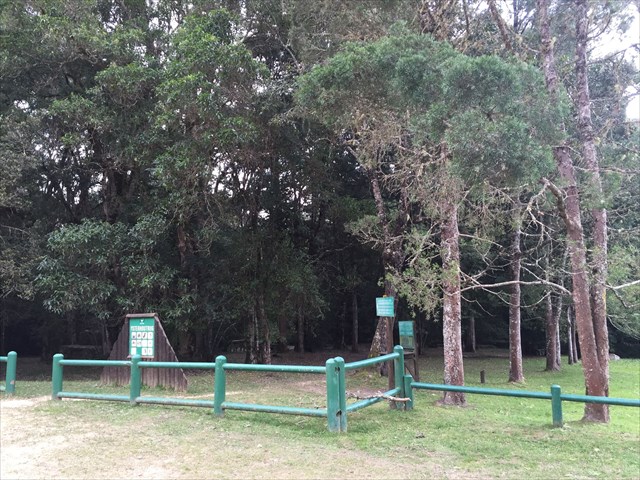The Knysna Turaco [South Africa: Knysna Loerie/Lourie], is a large turaco, one of a group of African near-passerine birds. The adult measures 40-42cm from beak to tail, and weighs in at 260-380g.
The Knysna Loerie has a sharply curved short but thick orange-red bill and a white line just under the eye that contrast with its mainly green plumage. It has a tall green crest, which is tipped with white. The eye is brown and the eye-ring deep red. In flight, Knysna Turaco shows the unmistakably conspicuous red primary flight feathers. Sexes are similar.
It is a resident breeder in the mature evergreen forests of southern and eastern South Africa. It is an unmistakable bird, although often inconspicuous in the treetops. It was formerly considered to be a subspecies of the Green Turaco of West Africa but vocal and chromosomal differences have now led to it being classified as a specie of its own. The easiest way to identify it from other green turacos is by the white tip on its rounded crest.
Did you know?: Turacos (the 10 species of the Tauraco and the 2 of the Musophaga) are the only birds to possess true red and green colour. When you look at most birds, the colour you are seeing is a reflection produced by the feather structure. The turaco's red pigment (turacin) and green pigment (turacoverdin) both contain copper. In fact, if you stirred a glass of water with a red turaco feather, the water would turn pink! In museum species, the pigments deepen with age because the copper begins to oxidize. These birds manage to maintain their colours throughout the year.
The Knysna Loerie is thought to use its red wing feathers to escape predators. When it flies, the predators tend to focus on the most visible colour and follow the red patch. As the Loerie lands and folds its wings, the red feathers of the wings become invisible and the Loerie has a chance of escaping unseen.
General habits: The Knysna Loerie is usually seen flying between forest trees, or hopping with agility along branches. Seeing one when out hiking through the forest is always a very special moment. Turacos are social, moving in small, noisy flocks. On the day I hid the cache I heard a chorus of these birds seemingly encouraging me on with my quest!
Call: It has a loud, distinctive kow-kow-kow-kow call.

Ysterhoutrug Picnic Site
The Ysterhoutrug picnic site situated along the R339 is a beautiful site to spend the day in nature with the entire family. There are wooden benches and tables under the trees but also lots of grass on which to spread your picnic blanket.The White Elephant Hiking Trail, 8km circular route, also passes through here if you want to go for a longer walk. The cache has been placed along this route accessible from the Picnic Site.
Getting There: From Knysna take the N2 towards Plettenberg Bay. About 4km from Knysna take the R339 Uniondale turn off to the left and follow this road for 14.4km and you'll see the picnic site on your left.see Parking Way Point].
Permit/Cost: There is no cost to use the picnic area. A permit obtainable from the Diepwalle Forestry Station is required to do the hiking trail. The forestry station is just up the road, turn off to the right after about 1km and continue to the station. Carry your permit on you.
Cache: The container is a camouflaged honey bottle containing a log sheet [please replace it carefully in the zip lock bag], pencil and sharpener. Please hide the container carefully as found.
There is space for small items of SWAG/trackables.
